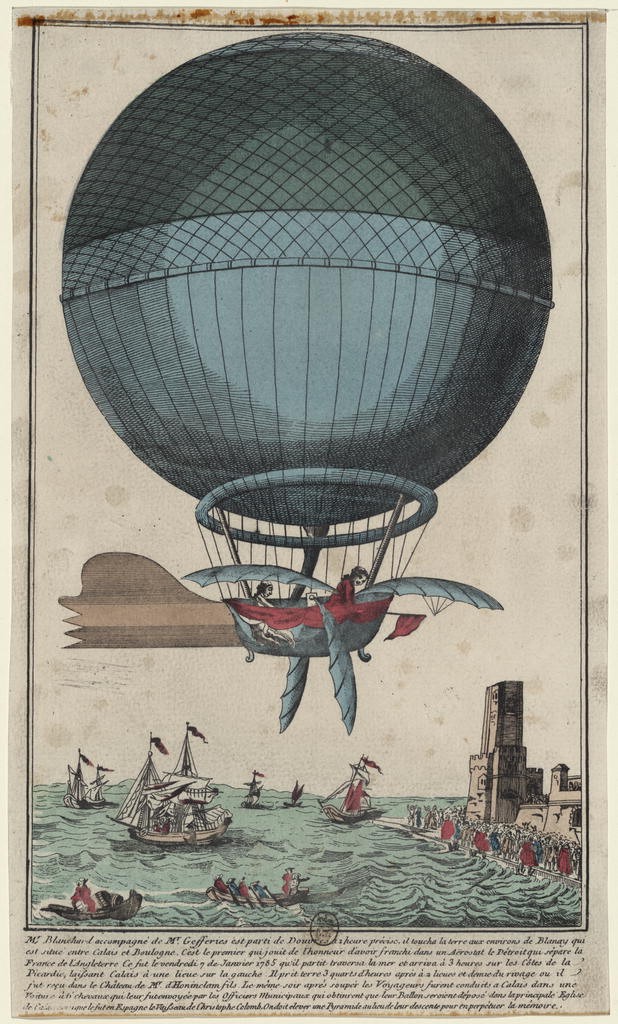First Balloon to Cross the English Channel
Contributor: Barry Fetzer
Sources: History.com, Historyhit,com, The Royal Aeronautical Society
Aviation history is a wonderful world of exciting firsts peppered with a sad world of depressing bursts. Even today there are risks in aviation, even with all our rules; procedures; navigational aids; high tech weather forecasting (so why are the forecasts still wrong much of the time?😊); inspectors and inspections; intense training; simulators; certifications; advanced designing techniques; computers; radios and radars; reliable piston and jet engines and propellers and rotors; advanced machinery, manufacturing and materials; world-wide standardization; safety checks; cutting-edge fuel refining processes and fuel testing, and a hundred other aviation advances.
Take as an example the Jeju Air Boeing 737-800, Flight 2216, crash at Muan International Airport in South Korea just 10 days ago. That 737 landed gear-up and slid 5000 or so feet along the 9000-foot runway before crashing into a concrete barrier at the end of the runway and bursting into flames, killing 179. There were two survivors, both flight attendants, seated aft in the aircraft. The investigation on the causes of this crash is ongoing.
The loved ones of the people killed in this crash don’t want to hear it and I wouldn’t want to hear it either if I had a loved one on that flight. Still, even with the unbelievable sadness and grief of this crash for so many people, flying is today, the safest way to travel. But it was far riskier on this day in aviation history in 1785, when according to the History.com editors and retrieved from: https://www.history.com/this-day-in-history/across-the-english-channel-in-a-balloon “Frenchman Jean-Pierre Blanchard and American John Jeffries on January 7, 1785 traveled from Dover, England, to Calais, France, in a gas balloon, becoming the first to cross the English Channel by air. The two men nearly crashed into the Channel along the way, however, as their balloon was weighed down by extraneous supplies such as anchors, a nonfunctional hand-operated propeller, and silk-covered oars with which they hoped they could row their way through the air. Just before reaching the French coast, the two balloonists were forced to throw nearly everything out of the balloon, and Blanchard even threw his trousers over the side in a desperate, but apparently successful, attempt to lighten the ship.

Blanchard’s successful crossing. Credit: The Royal Aeronautical Society
According to the website: https://www.historyhit.com/1785-english-channel-balloon-crossing/ in the midst of “dumping everything they could they kept hold of a letter, history’s first airmail. They completed the flight in two-and-a-half hours, landing in the Felmores Forest.”
Again, according to the History.com editors and highlighting the risks early aviators took to pursue their dreams, “Fourteen months earlier, French inventor Jean Francois Pilatre de Rozier and French army officer Francois Laurent had made the first manned hot air balloon flight when they flew over Paris for approximately 25 minutes. In June 1785, Rozier was among those racing to become the first balloonist to cross the English Channel, but he and his co-pilot were killed when their balloon caught fire during an attempted crossing.”
Onward and upward!
Sources: History.com, Historyhit,com, The Royal Aeronautical Society







